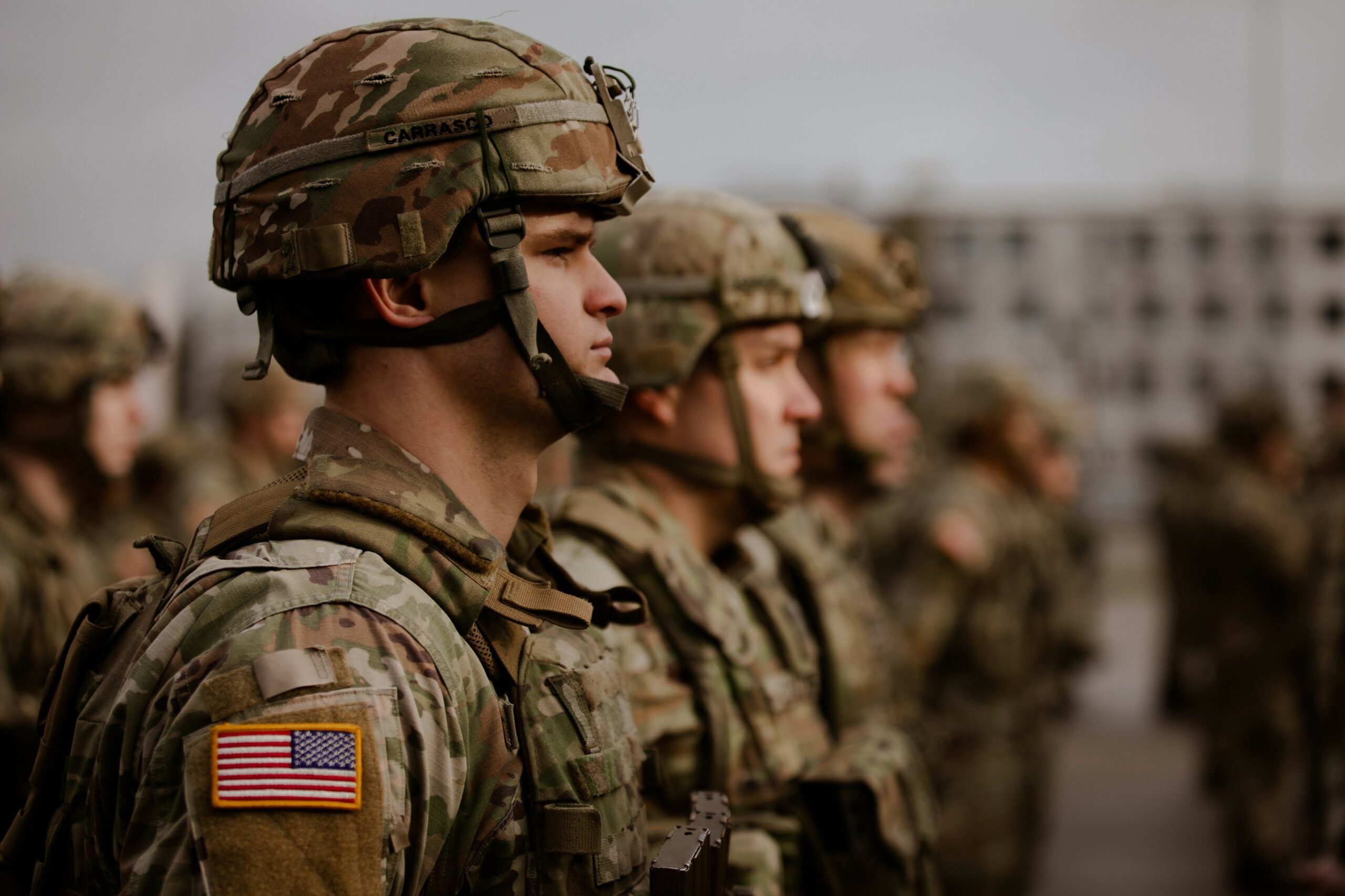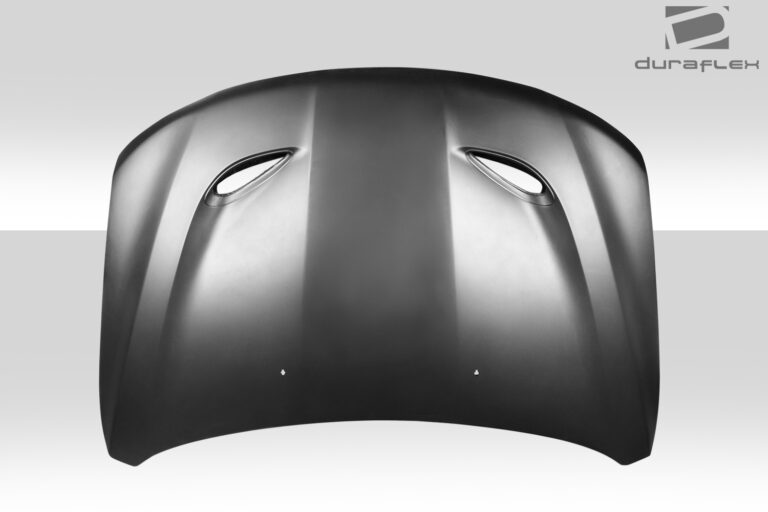Army Jeep Trailer For Sale: Your Ultimate Guide to Owning a Piece of Rugged History
Army Jeep Trailer For Sale: Your Ultimate Guide to Owning a Piece of Rugged History jeeps.truckstrend.com
In an era dominated by sleek, modern designs, there’s a growing allure for items built with uncompromising durability and a storied past. For enthusiasts of rugged utility, off-road adventure, and military history, few items capture this spirit as perfectly as an Army Jeep Trailer. More than just a simple hauling device, these robust, often quarter-ton workhorses are relics of wartime ingenuity, designed to follow their Jeep counterparts through the toughest terrains imaginable. Whether you’re an avid overlander, a military vehicle restorer, a dedicated camper, or simply someone in need of an incredibly tough utility trailer, understanding the nuances of "Army Jeep Trailer For Sale" is your first step towards acquiring a truly unique and dependable asset.
This comprehensive guide will delve deep into the world of Army Jeep Trailers, from their historical origins and diverse models to practical considerations for purchasing, restoring, and customizing one for your specific needs. We’ll explore the benefits, common challenges, and provide actionable insights to help you navigate the market and make an informed decision.
Army Jeep Trailer For Sale: Your Ultimate Guide to Owning a Piece of Rugged History
A Legacy of Durability: The History and Evolution of Army Jeep Trailers
The story of the Army Jeep Trailer is inextricably linked to the iconic Willys MB and Ford GPW Jeeps of World War II. Recognizing the need for a compact, highly mobile trailer that could keep pace with the Jeep in combat zones, the U.S. military commissioned various manufacturers to produce quarter-ton utility trailers.
- WWII Era (Bantam T3, Willys MBT, Ford GPW): The earliest and arguably most iconic trailers, these were designed with a simple, robust leaf-spring suspension, a steel tub, and a pintle hitch. They shared design philosophies with the Jeeps they towed, emphasizing simplicity, repairability, and extreme durability. These models are highly sought after by collectors for their historical authenticity.
- Post-WWII (M100): Following the war, the M100 trailer largely replaced the earlier models, incorporating minor refinements but maintaining the core design principles. It remained a quarter-ton capacity trailer, widely used by various branches of the military.
- The M416 (1950s-1980s): Perhaps the most commonly encountered Army Jeep trailer today, the M416 represents the evolution of the quarter-ton design. Introduced in the 1950s, it featured a slightly different tub design, often with a parking brake lever, and was manufactured for decades. Its widespread production means there’s a larger supply available on the civilian market.
- Larger Capacity Models (M101, M105): While the quarter-ton trailers are most popular for civilian use due to their compact size, the military also produced larger, heavier-duty trailers like the 3/4-ton M101 and the 1.5-ton M105. These are less common for personal off-road use but offer significant cargo capacity.

This rich history is part of what makes these trailers so appealing. Each dent, each faded patch of olive drab paint, tells a story of service and resilience.
Why Buy an Army Jeep Trailer? Benefits and Applications
The appeal of an Army Jeep trailer extends far beyond its historical charm. These trailers offer a unique blend of practical benefits that modern alternatives often struggle to match.
- Unmatched Durability and Robustness: Built to military specifications, these trailers were designed to withstand the harshest conditions imaginable. Their heavy-gauge steel construction, solid axles, and rugged leaf spring suspensions mean they can handle abuse that would destroy most civilian trailers. They are virtually indestructible workhorses.
- Exceptional Off-Road Capability: Designed to follow a Jeep anywhere, these trailers boast high ground clearance, a narrow track width, and a compact footprint. They are perfect for navigating challenging trails, rocky terrain, or muddy paths where larger, lower trailers would get stuck.
- Versatility in Application:
- Overlanding and Camping: Their robust design makes them an ideal platform for overland builds. They can be fitted with rooftop tents, custom storage solutions, water tanks, and electrical systems, transforming into go-anywhere mobile base camps.
- Utility and Hauling: From hauling firewood and construction debris to hunting gear or gardening supplies, their open tub design is incredibly practical.
- Historical Preservation: For collectors and restorers, owning an original Army Jeep trailer is a chance to preserve a piece of military history, often matching it with a period-correct tow vehicle.

- Cost-Effectiveness: While prices vary, a well-maintained or restorable Army Jeep trailer can often be acquired for significantly less than a new, purpose-built off-road trailer, offering superior durability and capability for the money.
- Customization Potential: The simple, rugged design of these trailers makes them a perfect blank canvas for customization. Owners frequently modify them for specific uses, adding modern amenities while retaining their classic appeal.

Key Models to Look For When Shopping
When you search for "Army Jeep Trailer For Sale," you’ll primarily encounter a few key models, each with its own characteristics:
- M416 (1/4-ton): This is by far the most common and popular model for civilian use. It’s lightweight (around 500-600 lbs empty), compact, and features a single axle. Its dimensions are ideal for towing behind SUVs, trucks, and, of course, Jeeps. Many have a hand-operated parking brake.
- M100 (1/4-ton): Similar in size and capacity to the M416, the M100 is an earlier post-WWII design. Visually, it’s very close to the WWII-era Bantam T3. It’s a solid choice if you find one in good condition.
- Bantam T3 / Willys MBT (WWII-era, 1/4-ton): These are the true vintage finds. They are generally rarer and command higher prices due to their historical significance. They are almost identical in function to the M100.
- M101 (3/4-ton): A larger and heavier-duty option, the M101 is identifiable by its larger wheels and sometimes dual-wheel configuration. While capable, its size can be a disadvantage for tight off-road trails, making it less popular for general overlanding compared to the 1/4-ton models.
What to Look For When Buying an Army Jeep Trailer
Purchasing an Army Jeep trailer requires a keen eye and a thorough inspection. These are old military vehicles, and their condition can vary wildly.
- Rust, Rust, Rust: This is the number one enemy. Inspect the entire frame, the tub floor (especially corners and drain holes), the fenders, and the pintle lunette for rust. Surface rust is manageable, but deep, pitting, or structural rust (especially in the frame rails or crossmembers) can be a deal-breaker or require extensive welding. Tap areas with a hammer to check for thin spots.
- Frame Integrity: Ensure the frame is straight and free of bends, cracks, or poor repairs. A bent frame can lead to tracking issues and tire wear.
- Axle and Suspension: Check the axle for straightness. Inspect the leaf springs for cracks, excessive sag, or broken leaves. Look at the wheel bearings for play (rock the wheel top-to-bottom).
- Tub Condition: While a few dents add character, look for major deformations, holes, or previous poor patch jobs.
- Wheels and Tires: Check the condition of the tires (dry rot, tread depth). Many trailers still have the original 5×5.5" Jeep bolt pattern, which is convenient if your tow vehicle shares it.
- Pintle Lunette: Ensure the lunette (the ring that connects to the pintle hook) is solid and not bent or cracked.
- Originality vs. Modifications: Decide if you want a historically accurate restoration project or a trailer that’s already been modified for modern use (e.g., axle swap, modern lights). If modified, assess the quality of the work.
- Title and Registration: This is crucial. Many surplus military trailers were never issued civilian titles. Registering a trailer without a title can range from a minor bureaucratic hurdle to a major headache, depending on your state or country’s laws. Some states allow "homemade" registration if you can prove ownership via a bill of sale. Always prioritize trailers with a clear title.
Restoration vs. Ready-to-Use: Choosing Your Path
When considering "Army Jeep Trailer For Sale," you’ll typically find two main categories:
- Restoration Project (The "Barn Find"): These are often the most affordable upfront. They will likely have significant rust, missing components, original wiring that needs replacing, and possibly original tires. They offer the satisfaction of bringing a piece of history back to life and allow for complete customization from the ground up. Be prepared for significant time, effort, and potentially unexpected costs for parts and materials.
- Ready-to-Use / Overland-Ready: These trailers have often already undergone some level of restoration or modification. They might have new paint, updated wiring, modern LED lights, possibly an axle swap for different bolt patterns or electric brakes, and sometimes even a custom lid or rooftop tent. These are more expensive but offer immediate usability. Still, inspect them thoroughly to ensure the work was done to a high standard.
Customization and Upgrades: Making It Your Own
The beauty of these trailers lies in their adaptability. Once acquired, many owners embark on projects to customize their Army Jeep trailer for specific needs:
- Axle Swap: A common modification is replacing the original axle with a new one that matches your tow vehicle’s bolt pattern (e.g., 6×5.5 for many trucks, 5×4.5 for modern Jeeps) and often includes electric brakes for safer towing, especially when loaded.
- Lid and Rack Systems: Custom fabricated lids provide security and weather protection for cargo. Integrated rack systems allow for mounting rooftop tents, awnings, fuel cans, or other overland gear.
- Electrical System: Upgrading to modern LED lighting is essential for road legality. Many owners add a dedicated battery, solar panels, and outlets for powering camping equipment.
- Fenders: Custom, wider, or stronger fenders might be added to accommodate larger tires or provide a platform for stepping.
- Paint: While military drab is iconic, many opt for custom paint jobs to match their tow vehicle or for a unique look.
- Hitch Conversion: While the pintle hitch is incredibly strong and ideal for off-road articulation, some owners convert to a standard ball hitch for convenience, though this must be done with robust adapters or a new coupler.
Legal Considerations and Registration
Before hitting the road with your Army Jeep trailer, understanding the legal requirements is paramount:
- Titling and Registration: As mentioned, this is often the biggest hurdle. Ensure you receive a bill of sale from the seller. If no title exists, research your local Department of Motor Vehicles (DMV) requirements for registering a "homemade" or "salvage" trailer. This often involves a VIN inspection, proof of ownership, and sometimes a bonded title process.
- Lighting: Your trailer must have functional tail lights, brake lights, turn signals, and often side marker lights, adhering to local regulations. Most old military trailers will need a complete wiring overhaul and new lights.
- Brakes: Depending on the trailer’s Gross Vehicle Weight Rating (GVWR) and your local laws, brakes might be required. While many 1/4-ton trailers don’t come with brakes, adding electric brakes (often part of an axle swap) is a wise safety upgrade, especially if you plan to carry heavy loads.
Where to Find Army Jeep Trailers For Sale
The market for Army Jeep trailers is robust, with several avenues to explore:
- Online Marketplaces: Websites like eBay, Craigslist, and Facebook Marketplace (especially local buy/sell groups and dedicated military vehicle groups) are excellent places to start your search. Use specific keywords like "M416 trailer," "Jeep military trailer," or "1/4 ton trailer."
- Military Surplus Dealers: Specialized dealers often acquire these trailers directly from government auctions and prepare them for civilian sale. They might be more expensive but often come with a clearer title and better condition.
- Government Auctions: Sites like GovPlanet or GSA Auctions periodically list surplus military equipment, including trailers. These can be great deals, but often require cash payment, specific pickup arrangements, and trailers are sold "as-is, where-is" with no guarantee of condition or title.
- Private Sellers and Enthusiast Forums: Military vehicle forums (like those for MVPA – Military Vehicle Preservation Association), Jeep forums, and dedicated overland/camping groups are fantastic resources. You can often find well-maintained or even customized trailers directly from enthusiasts.
- Word of Mouth: Let your local off-road clubs, mechanics, and friends know you’re looking. You never know what gems might be tucked away in someone’s backyard.
Common Challenges and Solutions
Even with their legendary durability, owning an old military trailer comes with potential challenges:
- Rust Repair: This is almost inevitable. Learning basic welding or finding a good welder is key. Solutions range from rust converters and protective coatings (like POR-15) to cutting out and replacing rusted metal sections.
- Finding Parts: While some parts are generic (bearings, seals), specific military components (like original pintle lunettes, original lights, specific body panels) can be harder to find. Military surplus stores, specialty online vendors, and enthusiast communities are your best bet.
- Towing Setup: Ensure your tow vehicle has a robust pintle hitch (if keeping original) or a properly installed ball hitch. Correct wiring for trailer lights is essential.
- Weight Distribution: Like any trailer, proper loading and weight distribution are crucial for safe towing, especially off-road. Keep heavy items low and forward.
Army Jeep Trailer Price Table
Prices for Army Jeep trailers vary significantly based on model, condition, originality, location, and whether a clear title is included. The table below provides general price ranges to help set expectations.
| Trailer Model/Condition | Typical Price Range (USD) | Key Factors Influencing Price |
|---|---|---|
| WWII Era (Bantam T3, Willys MBT) | $2,000 – $10,000+ | Rarity, historical authenticity, originality, restoration level, condition. Often no civilian title. |
| M100 (Post-WWII) | $1,500 – $5,000 | Overall condition, completeness, presence of a clear title. |
| M416 (1/4-Ton) – Project/Rough | $800 – $1,500 | Significant rust, missing components, original worn tires, no title. Requires extensive work. |
| M416 (1/4-Ton) – Usable/Good | $1,500 – $3,000 | Some surface rust, complete (may need lights/tires), functional, likely can be titled. |
| M416 (1/4-Ton) – Restored/Overland Ready | $3,000 – $6,000+ | Excellent condition, new paint, upgraded axle/lights, new tires, custom lid/rack, clear title. |
| M101 (3/4-Ton) | $1,000 – $4,000 | Size, overall condition, presence of surge brakes, military-specific features. |
| Customized/Overland Builds (Any Model) | $4,000 – $15,000+ | Extent of modifications (Rooftop Tent, custom rack, power, water), quality of build, included accessories. |
Disclaimer: These prices are estimates and can fluctuate widely based on market demand, regional availability, and the specific seller. Always conduct a thorough inspection and due diligence before purchasing.
Frequently Asked Questions (FAQ)
Q: Do Army Jeep trailers have titles?
A: Many surplus military trailers were never issued civilian titles when they were de-militarized. Obtaining a title can be the biggest hurdle. Some states allow "homemade" registration with a bill of sale, while others require a more complex process involving bond or VIN verification. Always ask the seller about the title status.
Q: Can I convert an Army Jeep trailer to a ball hitch?
A: Yes, it’s a common modification. You can purchase an adapter that fits into the pintle lunette, or replace the entire lunette with a standard ball coupler. Ensure any conversion is robust and safely installed, as the original pintle setup is incredibly strong and designed for off-road articulation.
Q: Are Army Jeep trailers street legal?
A: With proper lighting (tail lights, brake lights, turn signals, and sometimes side markers), and registration, they can be street legal. Many older trailers will require a complete wiring overhaul and new LED lights to meet modern standards.
Q: What’s the main difference between an M416 and an M100?
A: They are both 1/4-ton trailers and are very similar in function and appearance. The M100 is an earlier post-WWII design, while the M416 was produced later (from the 1950s) and is generally more common. The M416 often has a parking brake lever on the side and a slightly different tub profile.
Q: How much can an Army Jeep trailer carry?
A: The popular M416 and M100 are "1/4-ton" trailers, meaning they are rated to carry 500 pounds (1/4 of a ton) of cargo. While their robust construction might tempt you to overload them, sticking to the rated capacity is safer for both the trailer and your tow vehicle.
Q: Do these trailers have brakes?
A: Most 1/4-ton Army Jeep trailers (M416, M100) do not come with integrated brakes as standard. The larger M101 (3/4-ton) often has surge brakes. For civilian use, especially if carrying heavy loads, adding electric brakes (often part of an axle swap) is a highly recommended safety upgrade, and may be legally required depending on your state’s laws.
Q: Where can I get parts for an Army Jeep trailer?
A: Parts can be sourced from military surplus dealers, online vendors specializing in military vehicle parts, and through enthusiast communities and forums. Generic parts like wheel bearings and seals are often available at standard auto parts stores once you identify their specifications.
Conclusion: Your Adventure Awaits
The journey of finding, purchasing, and potentially restoring an "Army Jeep Trailer For Sale" is more than just a transaction; it’s an investment in a piece of history and a commitment to rugged utility. These trailers embody a no-nonsense approach to design and construction, offering unparalleled durability and off-road capability that often surpasses modern alternatives. Whether you envision it as a trusty companion for your off-road adventures, a versatile hauler for everyday tasks, or a meticulously restored historical artifact, an Army Jeep trailer is a testament to timeless engineering. With careful research, a thorough inspection, and a bit of elbow grease, you can own a piece of military legend that will serve you faithfully for decades to come, ready for whatever challenges the road – or the trail – throws its way.




